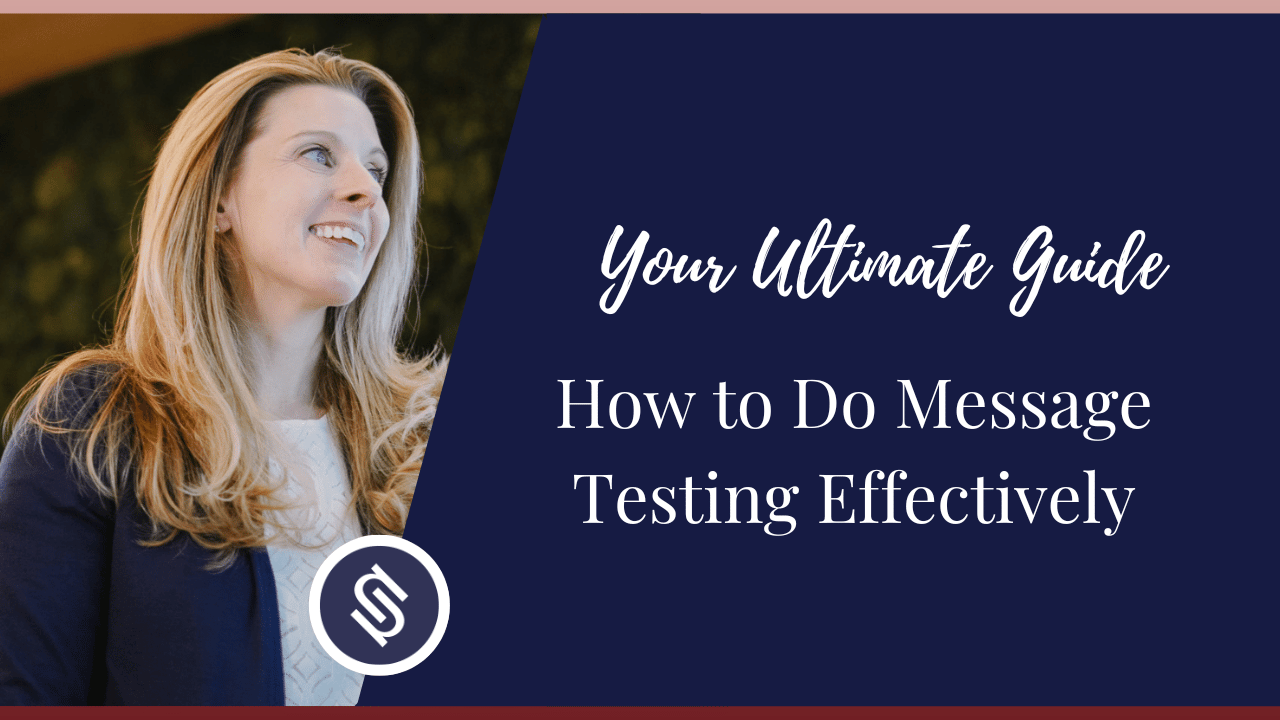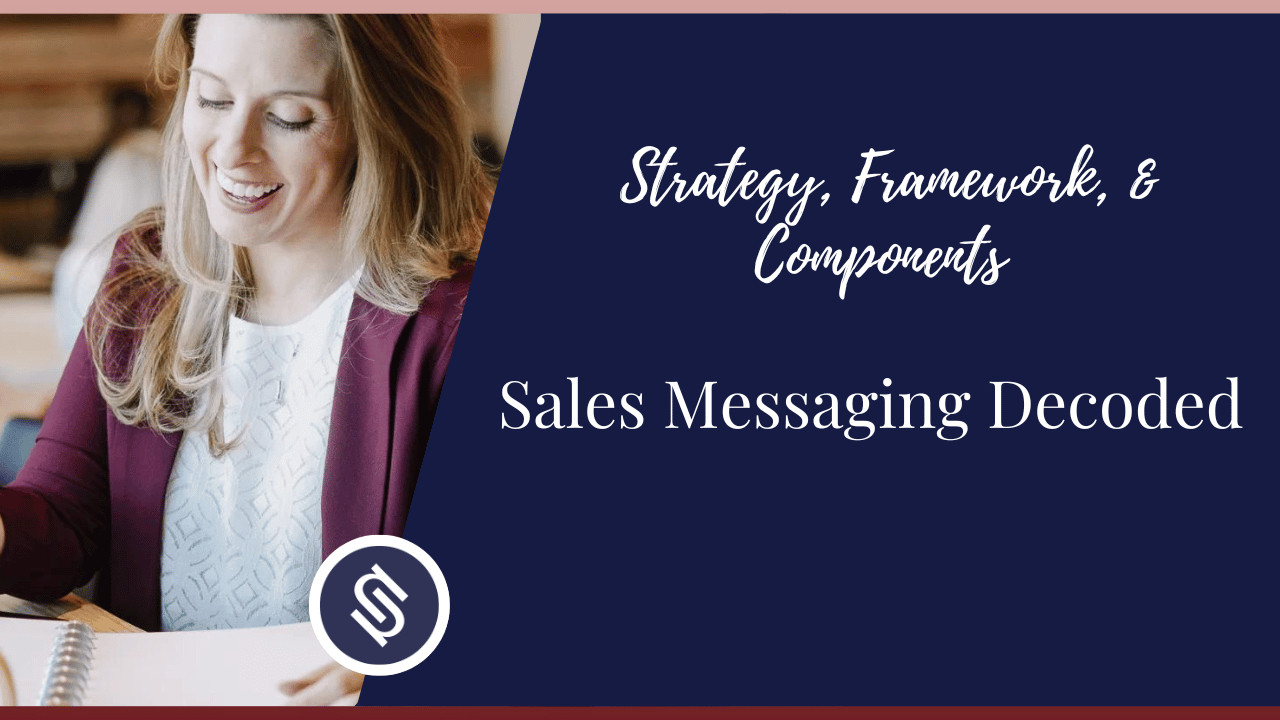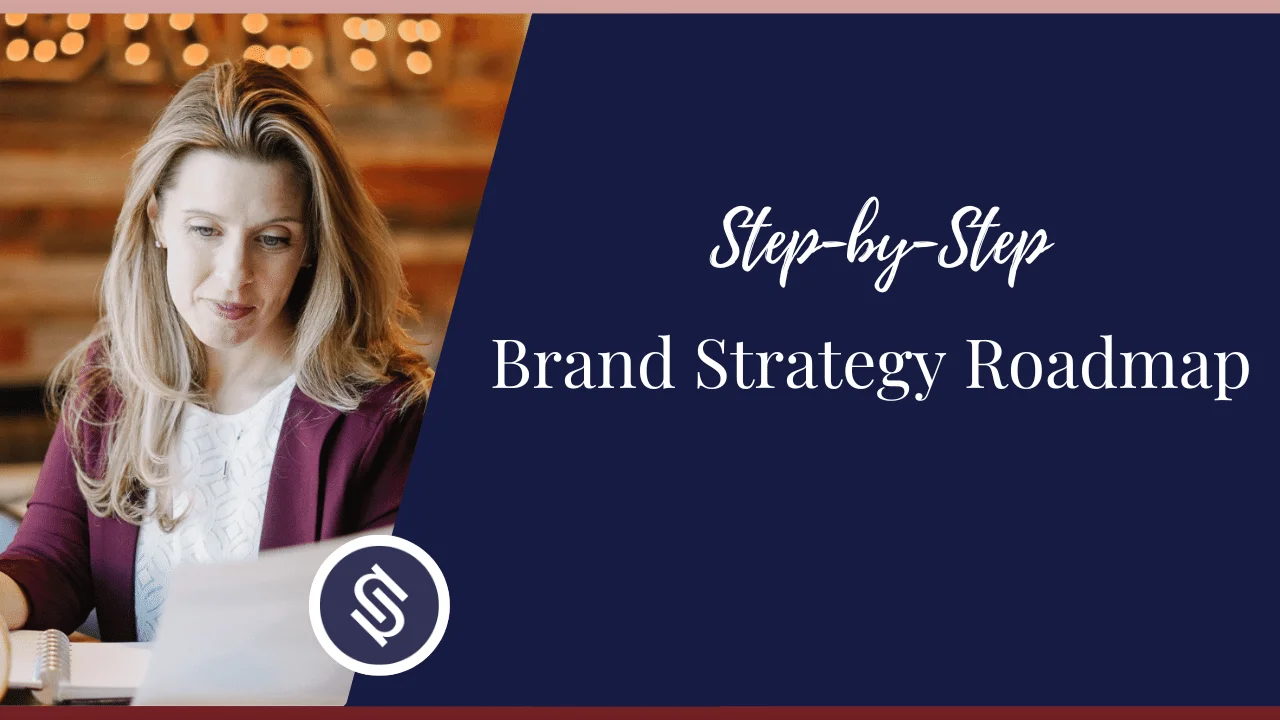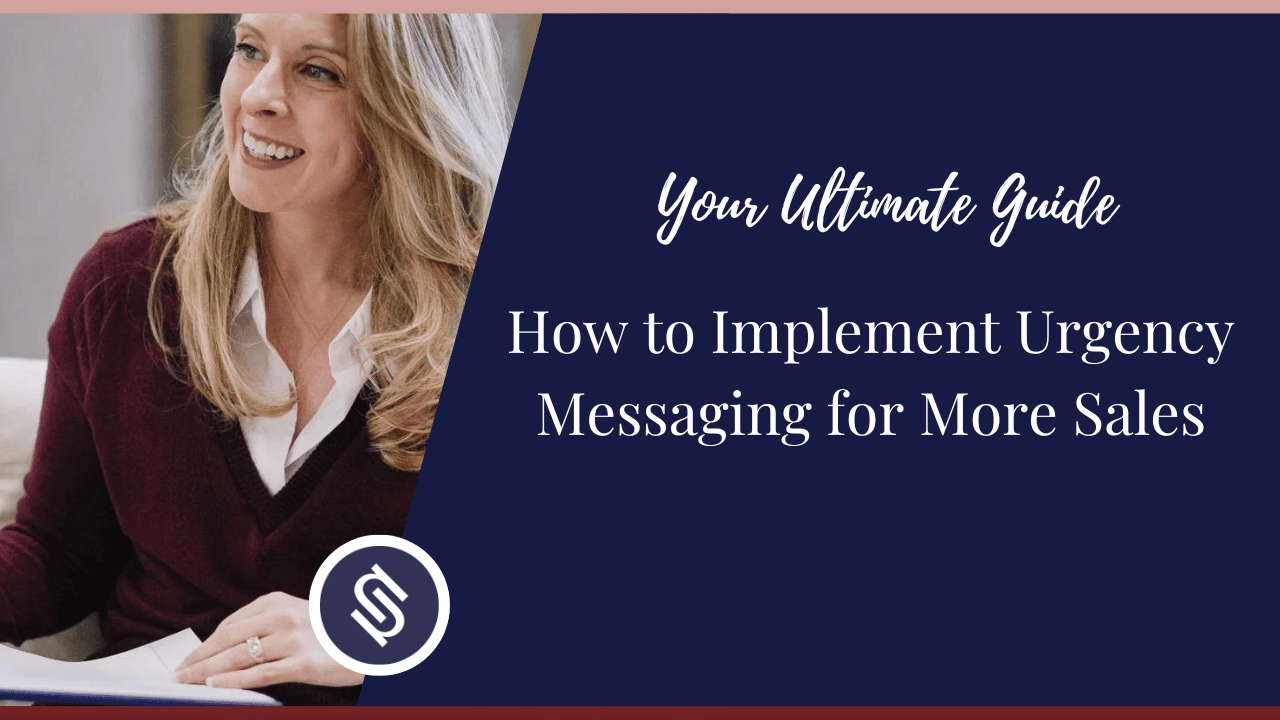In marketing, messaging is everything. It’s what gets people to engage and inspires them to act.
But it takes more than putting together a few catchy phrases. You have to understand what your customers want and then present them with a value proposition that aligns exactly with their needs.
It’s almost like getting inside their heads and telling them what they want in their own words.
Tricky, right? But not impossible. The key to doing that effectively is message testing.
In this in-depth guide, we explore this concept and help you learn how to apply it to your brand.
TL;DR – How to Do Message Testing
Don’t have the time for the full article now? Jump right to the good part.
Here’s how to do message testing in 4 steps:
- Identify your goals
- Choose your testing methods
- Conduct the test
- Analyze your results
Better yet, start a FiniSprint with me, Nora Sudduth, for one-on-one expert guidance on your messaging strategy.

What is Message Testing?
Message testing evaluates your marketing message to understand how effectively it resonates with your target audience.
It’s a vital part of marketing that provides insight into your customers’ behavior, interests, needs, and goals and determines whether your message hits the sweet spot that gets them to take a desired action.
Brand Message Testing vs. Marketing Message Testing
Your brand message is the overarching story that tells your audience what’s at your brand’s core. It tells why your brand exists and what it stands for.
On the other hand, your marketing message pertains to crucial messages related to specific campaigns, products, or services. These messages help package your brand so your audience finds it relatable and engages with it as you intend them to.
Message Testing Examples
Let me help you understand the importance of messaging testing better with these examples:
1. Evaluating ads for relevance and social context: In 2017, Pepsi taught the world a massive lesson on marketing and message testing when it ran an ad featuring reality show star Kendall Jenner.
Pepsi said the ad was meant to “project a global message of unity, peace, and understanding.” Unfortunately, contrary to peace, it ignited an uproar.
Apparently, you can’t settle a conflict with a can of soda.
The lesson is clear: test your message, especially if this is your first time launching an ad with a controversial message.
2. Testing product messaging for alignment with brand values and social impact: Dove’s Real Beauty campaign in 2004 is one of the biggest marketing triumphs.
Unilever surveyed over 3,000 women, and their research produced stunning data. They found that only 2% of women considered themselves beautiful, and 68% agreed that media and advertising promoted unrealistic beauty standards.
Message testing enabled Dove to launch an ad campaign that hit home. The company aligned its campaign with its research findings featuring everyday women–beautiful women–on its billboards instead of made-up models.
Needless to say, it was a success!
3. The Chevy Nova story: There’s a story about Chevrolet’s marketing of the Chevy Nova in Latin America, which resulted in poor sales. While the word “nova” in English brings heavenly ideas to mind, in Spanish-speaking countries, “no va” may translate to “no go.” Not a name you’d want for a car, which makes the meager sales understandable.
Well, some say the story didn’t happen, and the car actually sold well in Latin America (mainly because they don’t pronounce “nova” the way they say “no va” over there). But you get the point.
Let’s say this story is true. To avoid such terrible mishaps, test any new product’s name or tagline by running A/B testing and conducting surveys. If the messaging doesn’t click, then it should be a no-go.

Benefits of Testing Your Messaging Strategy
Every marketing strategy needs message testing. It’s like a road map directing you to where your campaigns must go.
Otherwise, you’d be merely guessing what works and relying on subjective markers that may not represent how your audience truly perceives your message.
But testing your messaging strategy helps you:
- Get to know your customers deeply: Think of the last time you bought a present for your best friend. I’m sure you knew exactly what to give them. You could just imagine them, gift in hand, beaming with joy. Right? That’s because you know them intimately. You know what makes them happy and what they dislike.
That’s how it is with your customers as well. When you understand what gets them to click that button, go to that website, or buy that product, you’ll be able to craft a messaging strategy that your audience relates with and influences them to do a desired action. - Speak your customers’ language: Don’t be a stranger to your customers. Be one of them, and they’ll listen to you. You can learn precisely what they need and how they articulate those needs. Testing allows you to shape your message in a relatable and impactful way for every audience segment.
- Maximize your resources: The last thing you want is to waste time and money on a marketing strategy that doesn’t work. Message testing informs your strategies so you can improve upon ongoing campaigns and create targeted ones in the future.

Perks of Hiring a Messaging Expert
If you’ve been running marketing campaigns that aren’t producing the results you hoped for, maybe it’s time for expert brand messaging consulting services.
Considering enlisting the services of a marketing pro? You’re on the right track. A messaging expert:
- Has expertise that boosts your ROI: Marketing campaigns should impact your bottom line. A brand messaging expert has specialized skills that help ensure the effectiveness of your marketing. As a result, you don’t have to suffer financial setbacks from too much trial and error.
- Can take on extensive marketing tasks: An expert is equipped to handle all levels of marketing strategy–such as drafting a marketing plan, defining your market position, crafting a compelling brand message, and completing your plans.
- Has valuable real-life experience: When you hire a pro, you not only access their skills but also tap into their expertise. That’s to say, they understand trends, make accurate projections, and use tactics that work in a real-life setting.
- Creates personalized strategies: What truly sets a messaging expert apart is their ability to craft strategies that fit your company to a tee. You don’t want a generic game plan just as much as you don’t wish to create a cliche or commonplace message. A pro understands your target market, competition, and goals, so their recommendations are personalized for your business.
- Saves you time: Time, like money, is a vital resource. Hand over the reins of creating effective messaging to someone who understands the nuances of branding, and you’ll save time to focus on things you’re good at.
Allow me to help you curate your marketing. I’ve worked with brands that have sold over $500M worth of products and services. I can do the same for you. Book a discovery call with me, and let’s get to work!

Message Testing Best Practices
Refine your message by evaluating its impact on your audience. As you do so, keep these best practices in mind to gain the most insightful results:
Test During Various Stages of Message Development
You don’t have to wait until you’ve finalized or launched your messaging before testing it.
During the exploratory phases, your message may not be ripe for testing. Still, you may already gain important ideas regarding early iterations that will guide you on how best to proceed.
As you refine your messaging, doing tests will ensure you’re hitting sweet spots until the message development process is complete.
Testing after launching a product, logo, web page, or any type of marketing campaign is also helpful for confirming pre-launch assessments and spotting opportunities for improvement.
Know When to Use Qualitative vs. Quantitative Methods
Later in this article, I’ll explain the difference between qualitative and quantitative testing methods.
But just to quickly give you an idea now, qualitative methods are open-ended, more comprehensive approaches, while quantitative methods are close-ended and more structured.
Qualitative approaches typically take longer and yield more detailed results, while quantitative methods give feedback right away.
Choose the right message testing methods for your campaigns to maximize your time and resources (and match your budget).
Regularly Revisit Your Results
Your audience’s opinions and feelings are not static. They will likely change as trends come and go or as they gain more life experiences.
Messaging that worked last year may not be as effective today. So, revisit your results, compare them against current feedback, and align your messaging strategy with what will create the most impact today.

Best Message Testing Methodology Explained
There is no one-size-fits-all methodology in message testing. Moreover, the best methodology is the one that will give you valuable insights into your message’s effect on your audience.
There are two main types of message testing methodology: qualitative and quantitative. Let’s explore these two further.
Quantitative Message Testing Methods
Quantitative methods are close-ended, structured approaches to message testing designed for use with a large group of people.
During the early stages of message development, they help steer you in the right direction so you don’t waste time on messages that don’t inspire the desired effect.
Some examples of quantitative methods are:
- Surveys: These are multiple-choice or yes-or-no tests that people can accomplish easily. They are a helpful way to quickly gather feedback.
- Heat maps: Graphical representations of data, such as what pages users visit the most, are an easy way to understand customer behavior on your website.
- A/B testing: This is ideal for comparing different versions of your message to understand which ones gain the most engagement or elicit a desired action.
- Five-second test: The five-second test puts your message (digital copy, an ad, web page, etc.) in front of a representative group for five seconds. Afterward, participants answer questions to share their reactions.
Qualitative Message Testing Methods
Qualitative methods give you a peek into your audience’s thoughts, feelings, motivations, and opinions. Usually conducted with a smaller representative group, these methods are beneficial during the later stages of message development.
These help justify or elaborate on insights gained from quantitative approaches.
Examples of qualitative methods are:
- Interviews: These provide detailed feedback from a small focus group.
- Questionnaires: Like interviews, questionnaires are a way to understand your audience’s thoughts, opinions, and values.
- Discussion boards: These are online forums where members can share their thoughts or participate in activities. Unlike interviews, forums can run for several days or weeks, so the responses gained can be more comprehensive.
Combining Qualitative and Quantitative Methods
You don’t have to limit yourself to one particular type of message testing method. In fact, combining the two for one campaign can be beneficial for gaining a more well-rounded insight into your audience’s psyche.
For instance, if you’re testing a tagline for a new product, you may want to combine qualitative and quantitative approaches.
During the early stages of your message’s development, simple surveys can give you a baseline understanding of your audience’s perception of your message and direct how you should proceed.
As you polish and finalize your messaging, questionnaires with open-ended questions and in-depth interviews will help you refine it and make it the final, most impactful version.
It can be challenging to decide which methods suit your campaigns best. I can help you with that. My message strategy expert services will help you craft authentic, effective, and personalized messaging to capture an audience that’s uniquely yours.

How to Do Message Testing Effectively
Now that you understand how important message testing is for your business, I’m sure you can’t wait to start!
Let me walk you through how it’s done:
1. Identify Your Goals
Understanding your objectives for conducting the test, such as checking whether your message is interpreted correctly, helps you choose the suitable methods and the best timing.
Establishing what you want to achieve by running the test will also help you stay on track and focus.
2. Choose Your Testing Methods
Once you set your objectives, you can select a testing method/s.
You can choose between qualitative and quantitative approaches depending on where you are in the message development stage.
Other considerations for choosing testing methods are:
- Time constraint
- Budget
- Type of insights needed
3. Conduct the Test
Now, on to the good part: it’s time to run the rest using your chosen methods. But first, you need to determine the following:
- How long the test should run for
- Channels to use (social media, websites or web pages, online discussion groups, etc.)
To conduct message testing, you’ll want to either gather a small group (also called focus groups) representative of your audience or make the test available to everyone (as in surveys and ads).
Smaller groups are ideal for qualitative testing methods, especially during the exploratory stages of message development.
How to Manage B2B Message Testing
Considering that the average human attention span is only eight seconds, surely you’ll want to make every message count!
The best way to manage your B2B messaging is by working with an expert who can create personalized strategies – from market positioning to messaging.
When managing B2B message testing, the following methods will come in handy:
- Email marketing: Want to know what gets potential customers to engage? Need more leads?
Email newsletters are a great way to do that and get tons of data in the process. Run A/B testing on emails for various audience segments and analyze which leads to the most conversions.
- Google search ads: One of the easiest ways to run message testing for B2B companies is Google search ads.
Launch multiple versions of your ads by tweaking the ad elements, like the title. Run them for one particular ad group or launch the same ads for different audience segments. Assess and compare results to learn the most effective messaging for drawing leads.
- Website testing: You’ll have the most liberty and flexibility for message testing on your website. You can run heat maps to understand customer behavior, track the number of clicks, or run A/B tests of different versions of web copy to understand which variations work better.

Frequently Asked Questions (FAQs)
Let’s discuss some of the most commonly asked questions about message testing:
What is Creative Message Testing?
Creative message testing is the process of evaluating your marketing message using a combination of media (such as images) and copy.
This type of testing is ideal for ads, social media posts, and web pages.
What is a Message Testing Survey?
A survey is a quantitative message testing method used to quickly gather feedback from your audience. It’s usually close-ended and comes in the form of multiple-choice questions.
What Are the Key Metrics for Evaluating Message Testing Results?
When testing your message using quantitative methods, you should look for the following metrics to measure the effectiveness of your campaign:
- Click-Through-Rates: Measures the number of clicks your ad, post, or page has gained over a specific period.
- Conversion rates: Monitors the number of times your audience completed a desired action, such as sign-ups.
- Return on investment: Track how your campaigns impact your bottom line by evaluating your ROI. A healthy campaign should look good on your books.
Can Message Testing Improve Customer Engagement?
Yes, message testing improves customer engagement, allowing you to analyze customer behavior, values, emotions, and opinions.
Knowing your audience deeply can shape your messaging to align with their interests and needs and encourage them to engage.
How Often Should Businesses Conduct Message Testing?
It’s helpful to conduct message testing before, during, and after launching a brand, product, or service. You can also revisit your messaging quarterly or annually to maintain your connection with your audience.
Conclusion
Refine your marketing and understand how to make your business memorable through message testing.
Set your goals, choose your testing method, and analyze your results to inform your future strategies and improve upon ongoing ones.
Sounds pretty straightforward, doesn’t it? However, choosing the right methods and running tests to achieve the best results can be confusing.
That’s where my expertise comes in. Book a discovery call with me, and let’s create your next successful marketing campaign!







